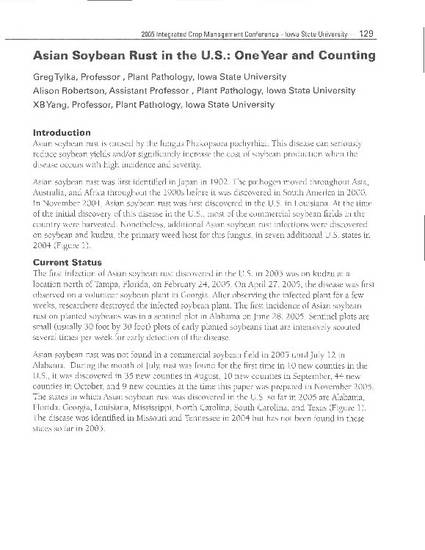
Asian soybean rust is caused by the fungus Phakopsora pachyrhizi. This disease can seriously reduce soybean yields and/or significantly increase the cost of soybean production when the disease occurs with high incidence and severity Asian soybean rust was first identified in japan in 1902. The pathogen moved throughout Asia, Australia, and Africa throughout the 1900s before it was discovered in South America in 2000.In November 2004, Asian soybean rust was first discovered in the U.S. in Louisiana. At the time of the initial discovery of this disease in the U.S., most of the commercial soybean fields in the country were harvested. Nonetheless, additional Asian soybean rust infections were discovered on soybean and kudzu, the primary weed host for this fungus, in seven additional U.S. states in 2004 (Figure 1).
Available at: http://works.bepress.com/gregory-tylka/232/
